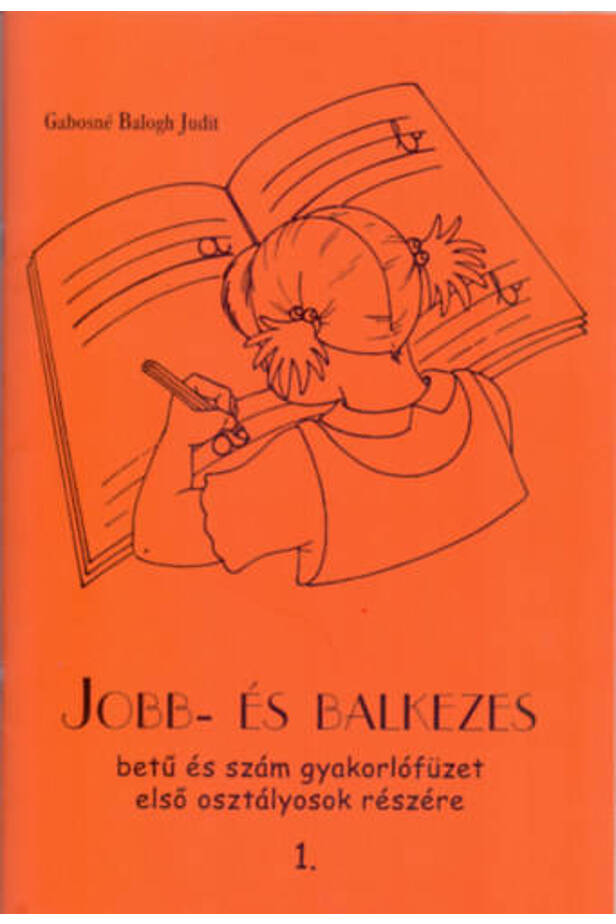Right and left-handed letters and numbers workbook 1-2.
Delivery time: 2 - 3 business days
Quantity:
HUF 1,890
Description
We can meet left-handed children and adults anywhere, anytime. Yet most of our writing tools and machines are almost exclusively adapted for right-handers. It is the job of the educator to help the left-handed person with all the means at his disposal by recognizing this backward situation. This is also necessary because the development of guarantee, speech, and intelligence are closely correlated. Left-handedness is not simply a consequence of habit, but a biologically based use of the hand that consistently favors the left over the right. In the left-handed, the right hemisphere dominates, and the neural pathways starting from here move the left half of the body to the "right" position. The left hemisphere, which is closely related to the right hemisphere, is responsible for logical, analytical, and linear thinking. Factual knowledge, special knowledge is stored in it and it allows analytical thinking. The right hemisphere is more involved in the development of intuitive conceptual ideas and less so in rational content. This problem of spatial orientation leads to uncertainty, errors in determining the direction and order of reading. If the child is left-handed, we need to teach him or her the correct hand and posture while writing. Shapes from left to right can be depicted first in the air, on the board, and then on the drawing sheet. In order for the left-handed5 child to be able to move forward with his peers, I tried to compile a workbook of practicing letters and numbers that would help him not to miss out on his peers. it can also be used in catch-up sessions, children with dyslexia, right-handed students and the development of special needs students. Years ago, children were prevented from using their left hand. Today, they are allowed to use their chosen hand, but they are not shown the most expedient way to do so. Their writing will be slow and messy, with a tendency to muscle fatigue, muscle exhaustion. All of this can create a dislike for writing. If they tried to imitate left-handers, they probably took on a situation known as a "hook." They write with their left arms bent so the hand is above the writing and the tip of the pencil is tilted towards the body. Using a pen is even harder, and writing with ink will be smudged and blunt. The cause of all these problems is direction. As you type, we start at the left margin and head toward the right side of the page. With right handers, the arm can be easily moved away from the body in an "outward" direction. The left-hander can expect the opposite. Some left-handed children write in the opposite direction, forced. The solution is to place the sheet of paper to the left of the center of the body. This will give the left arm enough room to move in as the hand writes from half of the paper to the right edge. This method encourages writing in the accepted direction and prevents the arm from cramping and the body from twisting. Another problem is the tension caused by the tight, convulsive grip of the writing instrument. For a small child, large paper and a thick pencil would be appropriate. It is very important that the pencil and pen are held at least 3 cm away from the tip when writing with the left hand, so that the fingers do not cover the words already described. (Initially, the Parent should participate in the exercise himself!)
| publisher | Zagora 2000 |
|---|---|
| writer | Gabosné Balogh Judit |
| scope | 84 |
| volume unit | oldal |
| ISBN | 9789638636386 |
| year of publication | 2019 |
| binding | soft board, glued |

Sign up for our newsletter and be the first to know!
A Zamnia hírlevélre való feliratkozással megerősítem, hogy betöltöttem a 16. életévemet.


